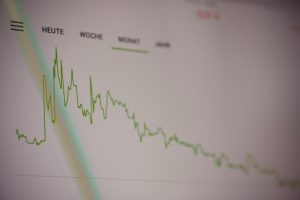What’s the difference between a portfolio and a fund?
Exploring the difference between a portfolio and a fund can feel like navigating a maze, especially if you’re new to investing. But don’t worry; I’m here to make it simpler. We’ll dive deeper into each aspect of portfolios and funds, comparing their structures, advantages, and potential drawbacks. Plus, I’ll sprinkle in some practical tips and examples to help you make more informed decisions.
Structure and Composition: A Closer Look
Portfolios: Personalized Collections
Think of a portfolio as a personalized investment basket. When you build a portfolio, you can pick and choose from a variety of asset classes such as stocks, bonds, commodities, or real estate. This flexibility allows you to customize your investments to align with personal goals and risk tolerance. For example, if you’re nearing retirement, you might prefer a conservative mix with more bonds than stocks to minimize risk.
Practical Tip: Regularly review your portfolio to ensure it still aligns with your financial goals. Market conditions change, and so should your portfolio strategy.
Funds: Collective Investment Vehicles
Funds, on the other hand, pool resources from multiple investors to create a diversified portfolio. This pooling means that even with a small investment, you can gain exposure to a broad range of assets you might not be able to afford individually. A classic example is a mutual fund, which can include hundreds of stocks or bonds, offering instant diversification.
Example: An S&P 500 index fund holds shares in the 500 largest U.S. companies, providing broad exposure to the stock market with a single investment.
Ownership and Control: Who Holds the Reins?
Direct Ownership with Portfolios
When you own a portfolio, you’re in the driver’s seat. You have direct control over every asset you own, and you can make changes based on your analysis or financial advisor’s recommendations. This autonomy is great if you enjoy being hands-on with your investments.
Common Mistake: Avoid emotional decision-making. It’s tempting to sell assets during market downturns, but a sound strategy often involves staying the course.
Indirect Ownership with Funds
Investing in a fund means you own shares or units of the fund itself, not the underlying assets. The fund manager decides which assets to buy or sell, based on the fund’s strategy. This can be a boon for those who prefer to leave investment decisions to professionals.
Practical Tip: Review the fund’s prospectus and understand the manager’s strategy and past performance before investing.
Management and Expertise: DIY or Professional Guidance?
Self-Managed Portfolios
Managing your own portfolio can be rewarding but requires time, knowledge, and vigilance. You might choose this route if you have a solid grasp of the markets and enjoy the challenge. Alternatively, hiring a financial advisor can provide tailored advice and strategic insights to optimize your portfolio.
Example: Jane, a tech enthusiast, chooses to self-manage her portfolio, focusing heavily on tech stocks due to her deep industry knowledge and comfort with market volatility.
Professionally Managed Funds
Funds benefit from the expertise of professional fund managers. These managers conduct in-depth research, leverage market insights, and implement complex strategies that individual investors might find challenging to execute on their own.
Stat Insight: According to a 2022 study by Morningstar, actively managed funds have slightly outperformed passive index funds in certain sectors, highlighting the potential advantage of professional management.
Diversification and Risk: Balancing the Equation
Portfolios: Tailored Diversification
Building a diversified portfolio means spreading your investments across different asset types to mitigate risk. You can choose to have a mix of stocks, bonds, and other assets like real estate or commodities to cushion against market swings.
Practical Tip: Utilize asset allocation models to guide your diversification strategy. A common model is the 60/40 split between stocks and bonds for balanced growth and stability.
Funds: Automatic Diversification
Funds naturally offer diversification, often spanning various sectors and geographic regions. This can be particularly advantageous for new investors who may not have the expertise or resources to diversify independently.
Example: A global equity fund might include stocks from North America, Europe, and Asia, spreading risk across different economies and currencies.
Costs and Fees: Understanding the Financial Impact
Lower Costs with Portfolios
Managing a portfolio on your own may incur fewer fees compared to investing in a fund. However, be aware of potential trading costs, research tools, and advisory services that may add up.
Practical Tip: Use commission-free trading platforms to minimize costs if you manage your portfolio independently.
Fees with Funds
Funds charge management fees, usually a percentage of the assets under management, alongside administrative expenses. While these fees cover professional management, they can eat into your returns over time.
Stat Insight: The average expense ratio for actively managed funds was 0.66% in 2022, compared to 0.13% for passive funds, according to Morningstar. Always compare fees when selecting funds.
Tax Implications: Navigating the Tax Landscape
Portfolios and Tax Efficiency
Owning a portfolio means you have more control over tax strategies. For instance, you can strategically sell assets to realize gains or losses that best suit your tax situation.
Common Mistake: Failing to consider tax implications when rebalancing your portfolio. Consult with a tax professional to optimize tax efficiency.
Funds and Tax Considerations
Funds distribute capital gains, interest, and dividends to investors, which can lead to taxable events. Some funds, like index funds, may be more tax-efficient due to lower turnover.
Practical Tip: Consider tax-efficient funds or those held in tax-advantaged accounts like IRAs to minimize taxable distributions.
Accessibility and Convenience: Ease of Investment
Portfolios: Hands-On Approach
Creating and managing a portfolio requires effort and time. It’s ideal for investors who enjoy the process of researching and selecting individual investments.
Example: Mike, a retiree with time on his hands, enjoys researching stocks and rebalancing his portfolio quarterly to align with market trends.
Funds: Set and Forget
Funds provide a more convenient option for those who prefer a more passive approach. Simply invest and let the fund manager handle the rest, making it easier for busy individuals to stay invested without constant oversight.
Practical Tip: Consider automatic investment plans to contribute regularly to your fund, leveraging dollar-cost averaging to build wealth over time.
Performance and Returns: Measuring Success
Portfolios: Potential for Higher Returns
With a self-managed portfolio, there’s potential for higher returns if you successfully pick outperforming assets. However, this also comes with higher risk and the need for ongoing management.
Stat Insight: According to a study by Vanguard, individual investors often underperform the market by 1.5% annually due to emotional decision-making and lack of diversification.
Funds: Consistent Performance
Funds aim to provide more consistent returns, aligning with their specific investment strategies. While they might not always outperform the market, they offer a more stable approach for many investors.
Example: A balanced fund with a mix of stocks and bonds may not achieve the highest returns but provides steady growth with reduced volatility.
Final Thoughts: Making the Choice
Choosing between a portfolio and a fund largely depends on your investment style, financial goals, and comfort level with managing investments. If you relish the challenge of active management and have the time to dedicate, a portfolio might suit you well. Conversely, if you prefer professional management and simplicity, funds offer a compelling option.
Remember, both portfolios and funds have their place in a well-rounded investment strategy. Consider blending both approaches to leverage the benefits of each, creating a diversified, balanced investment plan that aligns with your unique financial objectives. Investing isn’t one-size-fits-all, so tailor your strategy to fit your life and goals.


